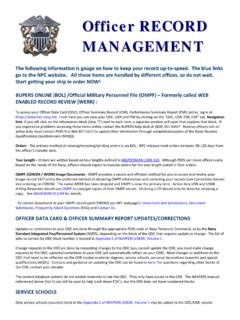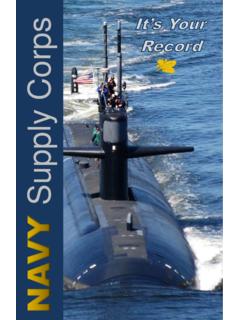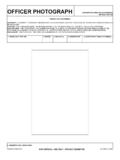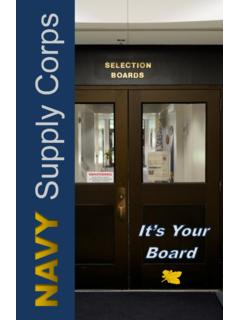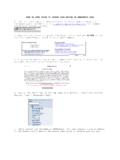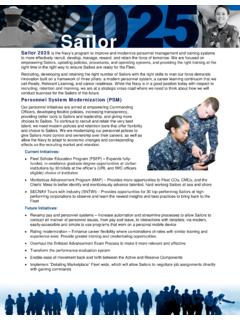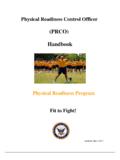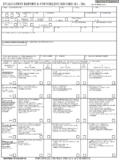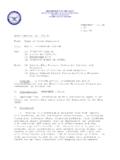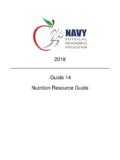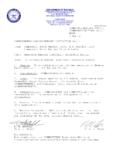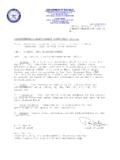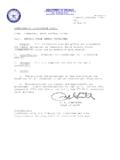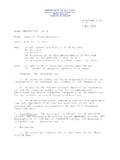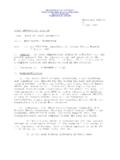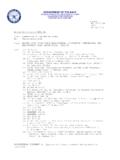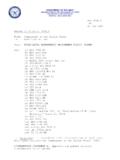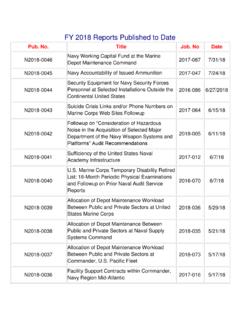Transcription of DEPARTMENT OF THE NAVY OFFICE OF THE CHIEF …
1 DEPARTMENT OF THE navy OFFICE OF THE CHIEF OF NAVAL OPERATIONS 2000 navy PENTAGON WASHINGTON, DC 20350-2000 OPNAVINST N314 12 Aug 2009 OPNAV INSTRUCTION From: CHIEF of Naval Operations Subj: SMALL ARMS TRAINING AND QUALIFICATION Ref: (a) OPNAVINST (b) SECNAVINST (NOTAL) (c) SECNAVINST (d) CJCSI (e) OPNAVINST (f) MILPERSMAN (g) SECNAVINST (h) OPNAVINST (i) NAVSUP P-724 (j) Sections 40701 through 40733 of Title 36, United States Code (k) DoD Directive , Section 3-211, Joint Ethics Regulation, 1 Aug 93 (l) OPNAVINST (m) OPNAVINST (NOTAL) (n) NTRP (o) SW300-BC-SAF-010 Rev 1 (p)
2 Marine Corps Reference Publication 3-01B, Pistol Marksmanship (q) Marine Corps Reference Publication 3-01A, Rifle Marksmanship (r) Army Field Manual , Pistol Marksmanship (s) Army Field Manual , Rifle Marksmanship Encl: (1) Range Regulations (2) Small Arms Dry Fire Training Procedures and Guidelines (3) Qualification Criteria for Pistols (4) Qualification Criteria for Rifles (5) Qualification Criteria for Shotguns (6) Qualification Criteria for Light, Medium and Heavy Machine Gun Performance Evaluation (7) Targets (8)
3 Sustainment Training for Category II Crew Served Weapons Operators OPNAVINST 12 Aug 2009 2 1. Purpose. To establish navy policy and prescribe minimum requirements for individual small arms training and qualification per references (a) through (s). This instruction is a complete revision and shall be reviewed in its entirety. 2. Cancellation. OPNAVINST 3. Applicability. This instruction applies to all active and reserve navy personnel; all navy law enforcement and security personnel (military, civilian, and contract personnel) per references (a) and (b); and to all personnel whose duties require them to be armed.
4 It also applies to personnel whose duties require them to be armed per reference (c). It does not apply to navy Special Warfare personnel, nor does it apply to Naval Criminal Investigative Service personnel. 4. Qualification and Safety Criteria. Categories of navy Personnel. This instruction contains the qualification criteria for all navy personnel who are issued weapons. Type Commanders (TYCOMs) will designate personnel in one of the four below categories. This instruction only provides procedures and courses of fire for weapons normally operated by category I and II personnel.
5 TYCOMs shall provide specific qualification and sustainment guidance for personnel designated as category III and IV; however, all those personnel designated category III and IV must abide by the basic qualification procedures contained herein prior to performing advanced weapons techniques unless specifically waived by OFFICE of the CHIEF of Naval Operations (OPNAV) Anti-terrorism/Force Protection Branch (N314). For purposes of this instruction, navy personnel are divided into four categories as follows: a. Category I.
6 Personnel who are issued a pistol primarily for personal protection. This category includes most officers, CHIEF petty officers, officer accession personnel, enlisted accession personnel, disbursing officers, couriers, aircrews, shipboard armed watch standers (officer of the deck/petty officer of the watch, rovers) as designated by TYCOMS, and Military Sealift Command (MSC) personnel who are armed in the course of their duties. Personnel/units in this category are those non-security personnel/units whose mission exposes them to potential hostile fire, thus requiring them to be armed for OPNAVINST 12 Aug 2009 3 self-defense.
7 Category I personnel must qualify on the navy Handgun Qualification Course on an annual basis with the same type pistol they shall be issued. b. Category II. Personnel who are issued weapons primarily to maintain security of DEPARTMENT of Defense (DoD) assets. This category includes law enforcement, non-expeditionary security forces to include contract security forces, armed watch standers, rovers and security reaction force personnel and others as designated by TYCOMs. Category II personnel shall qualify on all courses of fire required by this instruction as specified by each weapon specific enclosure for the weapons they are issued.
8 C. Category III. Personnel who are issued weapons for combat support and expeditionary operations. These units are attached to, or in direct support of, ground combat elements. This category includes, but is not limited to, navy Expeditionary Combat Command. Sustainment requirements are limited to TYCOM requirements. d. Category IV. Special Mission Specific. Personnel who are issued weapons for special missions. This category includes, but is not limited to: explosive ordinance disposal teams in support of special operations forces; convoy support personnel; F-18 aircraft squadrons attached to a Marine wing; designated marksmen; visit, board, search and seizure personnel; and nuclear weapons security for shore facilities.
9 5. Marksmanship, Safety, and Weapons Familiarization Instruction. Before each qualification fire event, small arms instructors shall provide marksmanship, safety and weapons familiarization instruction per the applicable enclosure. Instructors shall ensure all students are familiar with the range regulations, particular safety requirements associated with each weapon, Emergency Action Plan (EAP), and specific information regarding the range facilities as indicated in enclosure (1). The training shall also include weapon condition codes, clearing barrel procedures, characteristics/nomenclature, operation, remedial actions, assembly/disassembly, marksmanship fundamentals, weapon presentation, weapon engagement, and the use of deadly force as specified in references (c) and (d).
10 The period of time between the marksmanship, safety and weapons familiarization training and live fire qualification should not OPNAVINST 12 Aug 2009 4 exceed 30 days. Small arms students shall be required to demonstrate their ability to present the weapon, engage the target, and perform remedial actions before live fire qualification. Completion of Computer Based Training (CBT) is recommended in conjunction with annual live fire qualification.
